What do the Portuguese eat for breakfast?

Walking around Lisbon, particularly in the city centre and touristic areas, you’ll see cafés advertising full cooked breakfast options, featuring pancakes, eggs, bacon, sausages and more. While these can indeed be very enjoyable and will pack you with enough calories to go up and down the city of the seven hills, they couldn’t be further from what a typical Portuguese breakfast is all about.
A few months ago, a video by Gordon Ramsay cooking what he referred to as “Portuguese breakfast” went viral. In the images, we see the celebrity chef doing a fry-up with eggs, vegetables and Iberian black pork. Now just because you’re cooking in the Alentejo and you throw some Iberian meat in your pan, that doesn’t make it a local recipe, and much less typical.
Looking for the perfect #Portugal breakfast ??? Behind the scenes of #Uncharted I whipped up this incredible Pork and Eggs ! Watch it now: https://t.co/Iii3kaFAuV pic.twitter.com/TWEuObxKpC
— Gordon Ramsay (@GordonRamsay) June 7, 2021
If it’s true that the Portuguese love to take their time around the table for lunch and dinner, the same does not apply when it comes to the first meal of the day. Breakfast in Portugal isn’t an elaborate affair and, in many cases, ends up happening in two stages.
Typical Portuguese breakfast at home
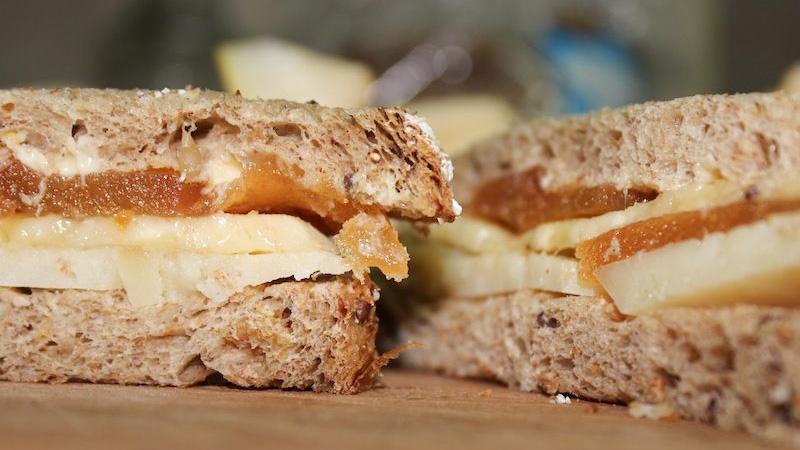
Most families do not eat a cooked breakfast at home. While some may include scrambled eggs, particularly during the weekend when you have more time to spend in the kitchen, the truth is that the main sustenance comes from items that require little to no preparation.
The most common foods you’ll find featured in a typical Portuguese breakfast would be bread, either in the shape of toast or a quick sandwich. If you ever order toast in Portugal you’ll know that it’s generally cut into three strips, generously buttered, and leaving the middle crustless strip for last is a ritual many locals follow. While in cafés, butter is the simple add-on for your toast, at home it’s common to enjoy sweet spreads such as honey, jams and quince marmalade. Besides internationally common jam flavors like strawberry, very Portuguese jams would include combinations such as tomato, pumpkin and walnuts or figs and Port wine.
When it comes to sandwiches, ham (fiambre), cheese (queijo) or a combination of both (mista) is the go-to for most households. Meat lovers may also opt to include in their sandwiches thin slices of some other cold cuts such as chourição, a thick chorizo type of cured sausage, or paio, smoked pork loin. Cured ham is not as typical in the morning as it is later in the day, but folks into a more substantial breakfast are no strangers to having a sandes de presunto for breakfast either.
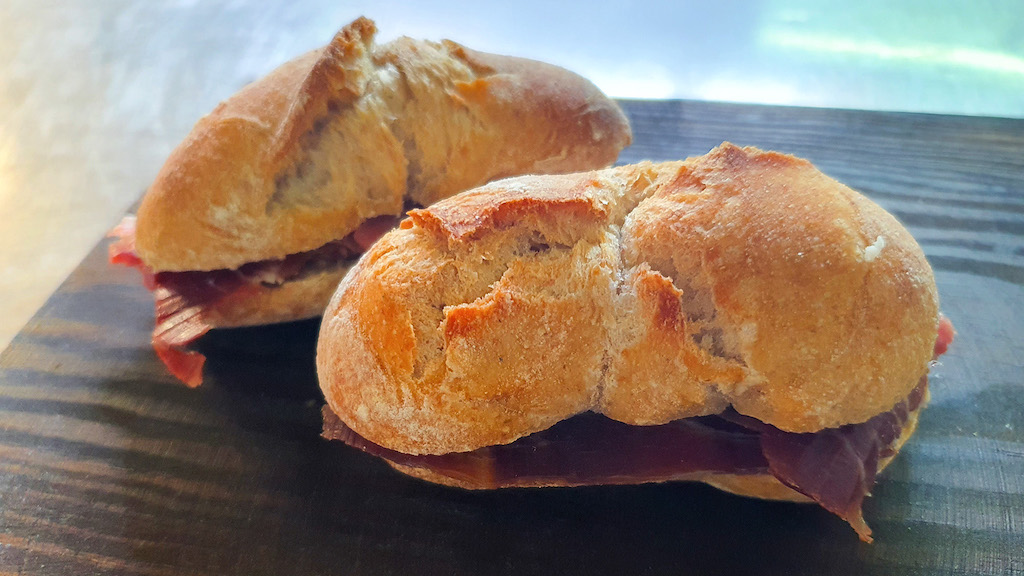
Particularly in the countryside, where people do sometimes still make their own quince marmalade, mixing savory cheese with indulgently sweet and fruity quince paste is still common. The standard cheese in Portugal is queijo Flamengo, which even though translates as Flemish cheese, couldn’t be more Portuguese. This cheese is very similar to Edam and comes sliced and ready to use or in very easily recognizable cheese balls with a red or dark pink wax exterior. Lower fat content cheeses are also good options for those who like to start the day with a lighter option. In this case, non cured cheeses like queijo fresco or requeijão are good options not just for closed sandwiches, but also to spread on toast, often with a little jam to pair with the freshness of the dairy.

To the contrary of other meals here in Portugal, breakfast tends to be rushed and sometimes even on-the-go. That’s why drinking yogurts are so popular and you’ll often find commuters sipping on flavored yogurt drinks on their way to school or work. At home, solid yogurts are also common, as well as other products like cereal, which kids are mostly the target market of. Fruit may just be included here and there, but no one will be surprised if you tell them your breakfast was mostly carbs, dairy and cold cuts.
Regardless of the choice of food, one thing is almost a given for most Portuguese from adolescence onwards: coffee! The most common choices of coffee in the morning are galão, one part coffee and two parts milk served in a tall transparent glass, meia de leite, 50% coffee and 50% milk served in a ceramic mug, or a straight up espresso which, unlike the milky drinks that are sipped while you eat, would normally be downed at the end of the meal. Many Portuguese even eat at home and grab their bica on their way to work. Espressos are so quick to drink that you’ll find plenty of coffee counters inside metro stations or in any given city corner, and people won’t even bother to sit down to have their coffee. It’s almost like a shot of caffeine to wake you up and help you face the day.
Typical Portuguese breakfast at a pastelaria

As cafés and pastry shops known in Portuguese as pastelerias are ubiquitous all over the country, grabbing your breakfast at one of these establishments is fairly common. This is not seen as a luxury and, unlike going out for brunch, which is a fancier outing, it can actually be very reasonably priced. Many cafés will have breakfast combos and chain stores like A Padaria Portuguesa, will offer breakfast menus featuring sandwiches, pastries, fresh orange juice and coffee for as little as 3.5 euros.
So what do Portuguese people eat for breakfast when they go out? It’s not that different from what we eat at home, but it tends to feature more sweets and fresh pastries. At a pastelaria, we’d often swap a homely sandwich for a croissant with ham and cheese. In the morning, we’re particularly fond of a type of croissant and sweet bread hybrid that goes by the name of croissant brioche and, even though it’s shaped like a crescent, is more dense and doughy than you’d expect a typically flaky French croissant to be. If your morning sweet tooth allows, you can also enjoy a pão de Deus, either on its own, or also stuffed with ham, cheese, butter or a combination of all. The dough of this typical pastry is similar to a fluffy brioche, and it’s topped with a sugary mix of egg jam and shredded coconut. Ordering a sandwich with pão de Deus is a great option for those into sweet and savory contrasts.

The most common types of bread for morning sandwiches here in Portugal are individual buns, either made of wheat or a mix of wheat and rye. In mainland Portugal rustic breads such as Alentejo bread or Mafra bread can also be used, while in the islands other local typical breads are enjoyed. In Madeira islands, bolo do caco, a flat bread made of wheat and sweet potato is commonly enjoyed, not just for breakfast but also with other meaty sandwiches during the day. In the Azores, slightly sweet bolo lêvedo, often compared to an English muffin, is a great local option. To the contrary of most breads in Portugal, these typical island breads aren’t baked in the oven but instead cooked in a griddle or pan on the stove stop.
For any sandwich you order at a Portuguese café, you’ll be given the option of adding butter and, if you don’t mention anything about it, it will sometimes be slathered on your bread by default. If you’d like to choose yourself, say com manteiga for sandwiches with butter and sem manteiga to exclude the extra fat. On that note, if you’re fond of butter, having toast at a Portuguese pastelaria is an experience worth risking a heart attack for. Torradas are either enjoyed for breakfast or as a mid-afternoon snack. In fact, most foods mentioned here can be interchangeably eaten in the morning or sometime between lunch and dinner if you get hungry. When ordering toast, you’ll be served a thick sliced bread that only cafés get their hands on, and which is about double the thickness of the regular sliced bread you’d get to make sandwiches at home. This white spongy bread is perfect to soak the lavish amounts of salted butter used to make it shine. In some places, even if you’re not given the option, you can usually also request toast to be made with Alentejano or Mafra bread, that is, more robust and nutritious country style bread.
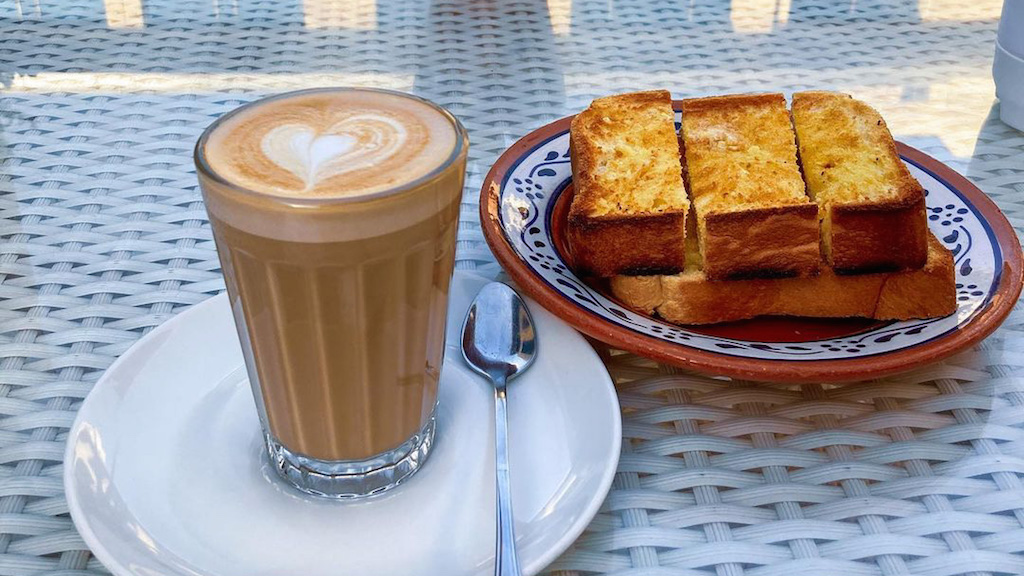
Even if some folks do not eat breakfast out, it’s common to visit a pastelaria mid morning for coffee or also for a quick bite. This would normally be referred to as lanche da manhã, that is, mid morning snack. This is the time when small pastries like custard tarts start being requested. Of course, you can have those first thing in the morning too, and some folks do, but mid morning is when the caffeine and sugar rush really starts in Portugal. And so it’s also common to see affordable combos featuring espresso and pastel de nata.
For those who like to start the day with sugary treats, pastries such as queques and bolo de arroz are customary, and particularly requested by those who like to dip the dough in their milky coffee – something that, actually, is pretty common with buttered toast too. Queques are Portugal’s take on muffins, and an adaptation of the word cake. These simple cakes are usually shaped like a flower and can sometimes feature toppings of walnuts and, in more pop interpretations, chocolate. Bolo de arroz is a classic of Portuguese pastelarias, and it consists of a muffin recipe featuring rice flour. While these tend to seem like lighter options as compared to creamy pastries like pastel de nata or other tarts, the truth is that queques and bolo de arroz are often more caloric, as they need more fat in order not to be dry to the palate. Either way, they should be eaten at least once when you are in Portugal, for a taste of a truly local breakfast or afternoon snack!
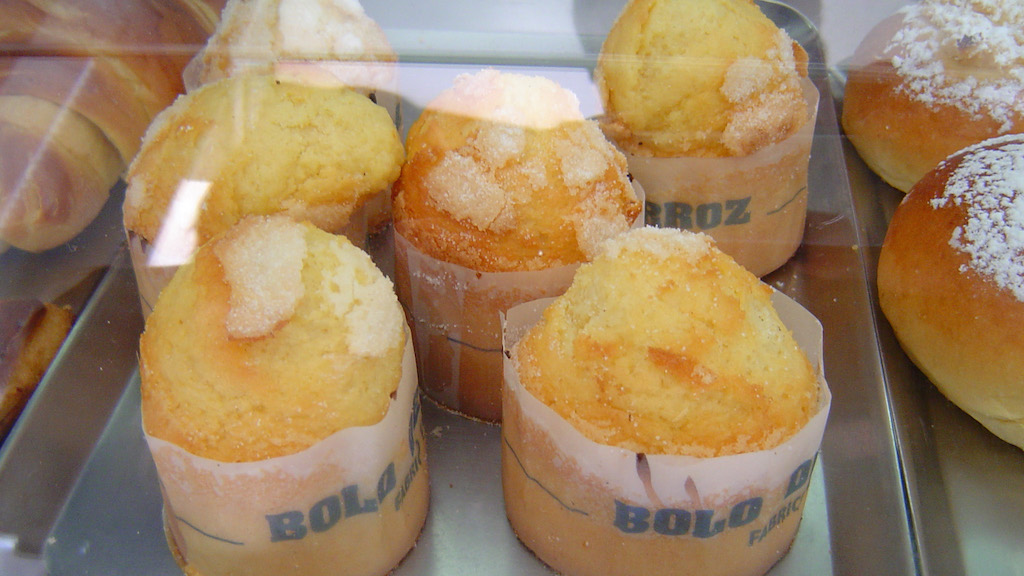
If you plan on eating breakfast out while in Portugal, here are some words that will be useful for you to learn:
🍞
Sandes de queijo – cheese sandwich
Sandes de fiambre – ham sandwich (not to be mistaken with cured ham)
Sandes mista – ham & cheese sandwich
Tosta mista – grilled ham & cheese sandwich, aka a toastie, usually with buttered bread
Torrada – toast with [plenty of] butter
Sumo de laranja – orange juice
☕
Café or Bica – espresso. Note that the term bica is only used in the Great Lisbon area.
Meia de leite – 1 part coffee, 1 part milk. Similar to a cappuccino, minus the foam.
Galão – 1 part coffee, 2 parts milks. Similar to a latte.
Abatanado – long extracted espresso in a cappuccino style cup, the closest you’ll get to an Americano in a typical Portuguese café.
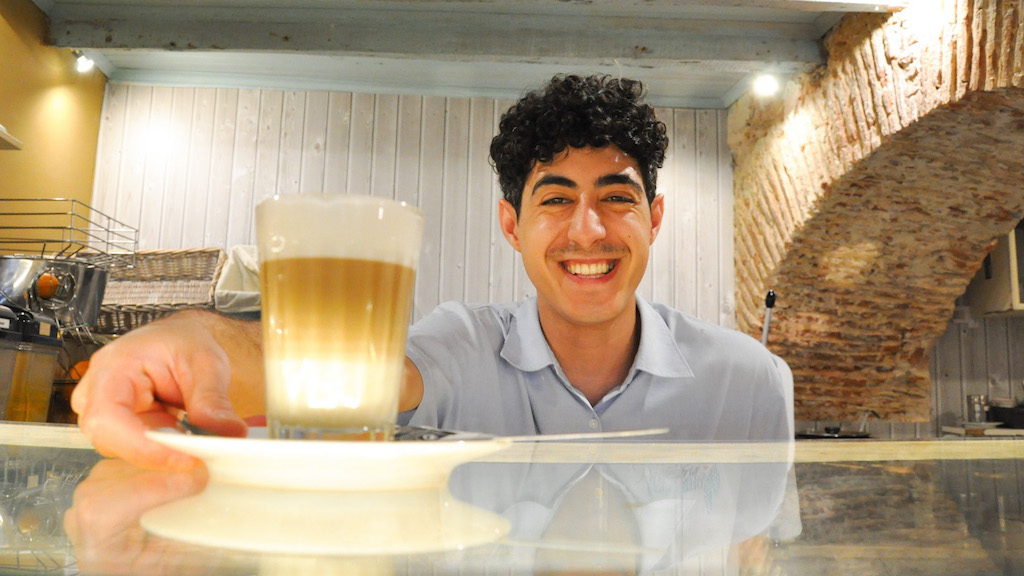
Now that you know what Portuguese breakfast is all about, we’d love to recommend to you some of the pastelarias and cafés where you can start your day like a local! These are some of the best places in Lisbon which you can visit to try a typical Portuguese breakfast, which are also great for a mid afternoon coffee and a bite:
Padaria da Esquina
For a great selection of artisanal breads.
📍Rua Coelho da Rocha 108, 1350-079 Lisbon
Choupana Caffé
So see what the youth of Lisbon are munching on, and order a decadent croissant.
📍Av. da República 25A, 1050-186 Lisbon
www.instagram.com/choupanacaffe
Pastelaria Aloma
To taste some of the best pastéis de nata in Lisbon. Several locations across the city, including:
📍Campo de Ourique: Rua Francisco Metrass 67, 1350-139 Lisbon
📍Chiado: Largo Calhariz 3, 1200-050 Lisbon
📍Inside El Corte Ingles shopping center: Av. António Augusto de Aguiar 31, 1069-413 Lisbon
A Padaria Portuguesa
For an all-day breakfast combo that costs only €3,50 and includes a sandwich with ham and cheese, fresh orange juice and your choice of coffee.
📍44 locations all over Lisbon
Confeitaria Nacional
To enjoy your breakfast in a refined environment, with high quality pastries and dedicated service.
📍 Praça da Figueira 18B, 1100-241 Lisbon
https://confeitarianacional.com
Pastelaria Versailles
To savor your breakfast while people watching and pondering on how, chances are, the other customers have been coming here for their breakfast or mid morning coffee for decades!
📍Av. da República 15 A, 1050-185 Lisbon
Pastelaria Benard
For breakfast with a historical aftertaste, in the heart of the Chiado district.
📍Rua Garrett 104, 1200-205 Lisbon
Pastelaria Califa
To grab breakfast in the neighborhood of Benfica, with no other tourists around.
📍Estrada de Benfica 463, 1500-081 Lisbon
Café Com Calma
To calmly enjoy the atmosphere of a pleasant place other than a typical Portuguese café or pastelaria, particularly during weekend mornings.
📍Rua do Açúcar 10, 1950-242 Lisbon
www.instagram.com/cafecomcalma
Leitaria Lisboa
For dairy lovers.
📍Rua Artilharia 1 87A, 1070-012 Lisbon
As they say, breakfast is the most important meal of the day. While in Portugal, enjoy breakfast like a local! If you head out for breakfast in Lisbon, share your photos with us on Instagram and Facebook, tagging @tasteoflisboa #tasteoflisboa
We’ll love to know about your insights, questions, suggestions and wishes on your food & culture experiences in Lisbon and Portugal. Please share with us via Facebook, Instagram or Twitter or email us: enjoy@tasteoflisboa
Feed your curiosity on Portuguese food culture:
The best artisanal bakeries in Lisbon
How to identify the perfect Portuguese custard tart
10 pastries you should eat in Portugal (besides custard tart)
Foods you didn’t know were Portuguese
Real people, real food. Come with us to where the locals go.
Signup for our natively curated food & cultural experiences.
Follow us for more at Instagram, Twitter e Youtube
